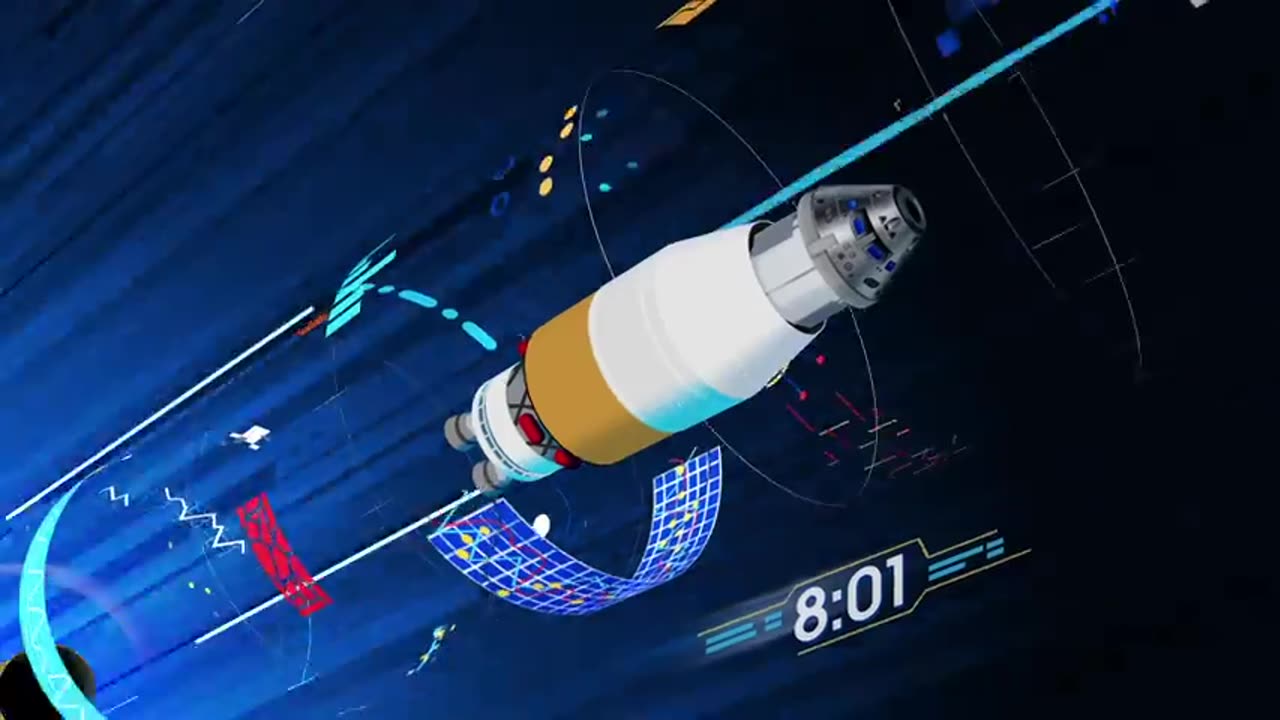Premium Only Content

How We Are Going to the Moon
As of my last update in September 2021, there are several key aspects to consider when discussing how we are going to the Moon:
Spacecraft and Rockets: Space agencies, like NASA (United States), Roscosmos (Russia), CNSA (China), and others, use advanced spacecraft and rockets to send astronauts and equipment to the Moon. These spacecraft are designed to carry crew, supplies, and scientific instruments to the lunar surface.
Orbital Trajectory: To reach the Moon, spacecraft follow a specific trajectory known as a Trans Lunar Injection (TLI). This involves firing the spacecraft's engines at a precise point in Earth's orbit to increase its speed and escape Earth's gravity, ultimately setting it on a course to intercept the Moon.
Lunar Orbit: Once the spacecraft reaches the Moon's vicinity, it enters lunar orbit. This is a crucial phase where the spacecraft adjusts its trajectory to achieve the right orbit around the Moon. It might perform orbital maneuvers to reduce its speed and ensure a safe lunar landing.
Lunar Landing: For crewed missions, landing on the Moon is a delicate operation. Spacecraft use descent engines and thrusters to slow down and control their descent onto the lunar surface. Robotic missions might use a combination of retro-rockets and airbags to land safely.
Surface Operations: Once on the lunar surface, astronauts or robotic rovers conduct various tasks. These tasks include collecting samples, setting up experiments, and exploring the Moon's terrain. Astronauts wear specially designed suits to protect themselves from the harsh lunar environment.
Return Journey: After completing their activities on the Moon, astronauts or robotic missions need to leave the lunar surface and head back to Earth. This involves ascending from the Moon's surface and re-establishing an Earth-bound trajectory.
Re-entry and Splashdown/Landing: As the spacecraft re-enters Earth's atmosphere, it experiences intense heat due to friction. Heat shields are used to protect the spacecraft during this phase. Depending on the mission, the spacecraft might splash down in an ocean or make a controlled landing on solid ground.
Future Missions and Technologies: Since 2021, there have been plans for establishing a sustainable human presence on the Moon, such as NASA's Artemis program. This program aims to send the first woman and the next man to the lunar surface, develop lunar habitats, and prepare for eventual missions to Mars. Technologies like the Space Launch System (SLS) and the Orion spacecraft are being developed for these missions.
-
 2:33:02
2:33:02
Nerdrotic
7 hours ago $1.63 earnedMysteries of Mars with Mike Bara | Forbidden Frontier 098
58.8K20 -
 3:05:07
3:05:07
IsaiahLCarter
3 hours agoApostate Radio #009: Standing Up with Eric Abbenante
16.3K1 -
 11:53
11:53
Forrest Galante
2 hours agoIs This Giant Extinct Sea Cow Still Alive?
12.3K4 -
 1:14:47
1:14:47
Josh Pate's College Football Show
5 hours ago $2.55 earnedTennessee & Nico Disaster | Portal Chaos Ahead | Biggest “What-Ifs” | Truth About Big Noon Kickoff
27.6K3 -

Tundra Tactical
4 hours ago $0.33 earned$3200 ZEV HEARTBREAKER Contest!!! TONIGHT On The Worlds Okayest Gun Live Stream
25.8K -
 LIVE
LIVE
IcyFPS
2 hours ago🟢SOLO LEVELING LIVE 🟢 PREMIUM PAYDAY | SUNDAY GUNDAY |
164 watching -
 LIVE
LIVE
Damysus Gaming
3 hours agoWeaving into the Deep South: South of Midnight First Play!
205 watching -
 DVR
DVR
EricJohnPizzaArtist
4 hours agoAwesome Sauce PIZZA ART LIVE Ep. #43: Misses Ma’am!
28.5K5 -
 54:59
54:59
Stephen Gardner
9 hours ago🔥Biden insider: Obama was Pulling Strings | Trump Derangement is RAGING!
71.8K257 -
 5:51:22
5:51:22
Delnorin Games
6 hours ago🔴 Live - Star Citizen
36.4K